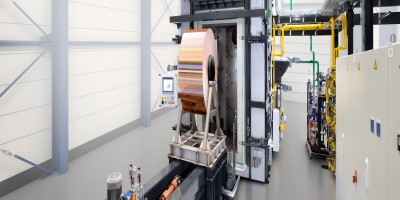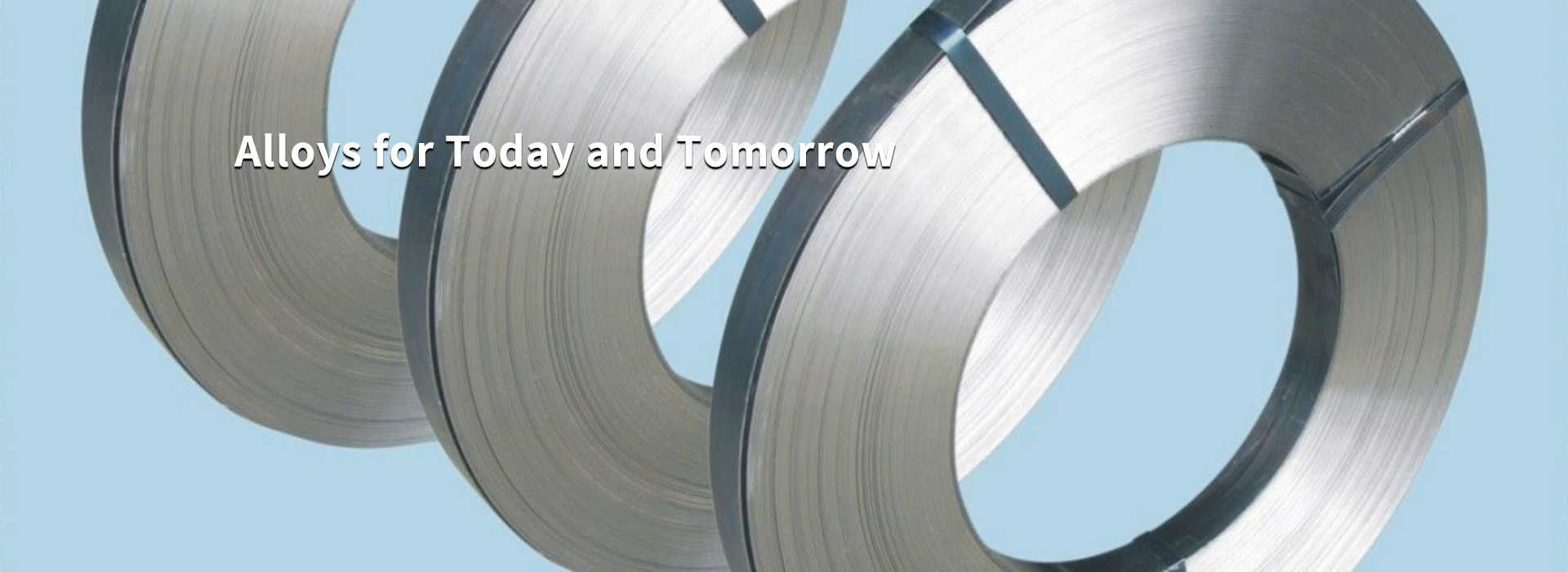Services
Description of UrbanMines’ Metal Strip TA Heat Treatment Process
Metal TA heat treatment refers to a process in which a metal workpiece is heated to a suitable temperature in a certain medium, kept at this temperature for a certain period, and then cooled at different speeds in different media to control its performance by changing the surface or internal microstructure of the metal material. TA heat treatment can effectively improve the microstructure and mechanical properties of materials by precisely controlling temperature, time, and cooling methods. TA heat treatment mainly includes annealing, solution treatment, and aging treatment.
The main methods and functions of TA heat treatment :
Annealing treatment :
The purpose is to eliminate processing stress and improve the plasticity and toughness of the material. For example, the annealing temperature of TA18 titanium alloy is generally between 700°C and 800°C, the holding time is 1 to 2 hours, and it is cooled with the furnace. This process can refine the grain size of the material, increase its uniformity, reduce the yield strength to about 450 MPa, and increase the elongation to more than 25%.
Solution treatment :
The purpose is to promote the uniform distribution of α phase and β phase and improve the strength and hardness of the material. For example, the solution temperature of TA18 titanium alloy is usually between 900°C and 950°C, the holding time is 30 to 60 minutes, and then rapid water cooling or air cooling. This process helps to evenly distribute the α phase and β phase, increase the yield strength to more than 800 MPa, and the tensile strength reaches 950 MPa, but the plasticity decreases slightly.
|
Aging treatment : The material is further strengthened based on solution treatment, and the mechanical properties are improved by precipitating fine metastable phases. For example, the aging treatment temperature of TA18 titanium alloy is generally between 500°C and 600°C, the holding time is 4 to 8 hours, and it is cooled with the furnace. Through aging treatment, the yield strength can reach more than 900 MPa and the tensile strength is about 1000 MPa, but the plasticity is further reduced to about 10%. |
 |
Description of UrbanMines’ Copper and Copper Alloy Annealing Heat Treatment Process
Pure copper is recrystallization annealing. The commonly used heat treatment methods for copper alloys are homogenization annealing, stress relief annealing, recrystallization annealing, solution treatment, and aging treatment.
Stress relief annealing:
The main purpose is to eliminate the residual internal stress generated during the deformation process, stabilize the cold deformation and size and performance, and prevent the workpiece from deforming during processing. Cold-deformed brass, aluminum bronze, and silicon bronze have a serious tendency to stress corrosion cracking and must be subjected to stress relief annealing. The stress relief annealing temperature of copper alloys is 30-100℃ lower than the recrystallization annealing temperature, about 230-300℃. The temperature of copper alloys with complex components is slightly higher, generally 300-350℃. The holding time is 30-60 minutes.
Stress relief annealing has a significant effect on the strength and hardness of copper alloys, and the annealing hardening phenomenon will occur when the copper alloy with a large amount of stress relief annealing is subjected to annealing hardening. This phenomenon is particularly obvious in aluminum bronze with a Zn content greater than 10%, an Al content greater than 4%, and yellow bronze with a Mn content greater than 5%. This is related to the formation of an ordered solid solution or the aggregation of solute atoms around dislocations.
Recrystallization annealing:
The purpose of annealing is to eliminate work hardening, restore plasticity, and obtain a fine-grain structure. The grain size of brass has a great influence on its processing performance. Fine grain structure has high strength and good processing surface quality, but it has high deformation resistance and is difficult to form. Coarse grain structure is easy to process but has poor surface quality and poor fatigue performance. Therefore, the grain size of yellow bronze used for pressure processing must be controlled according to needs.
Bright annealing:
Copper and copper alloys are easily oxidized during processing. To prevent oxidation and improve the surface quality of the workpiece, annealing in a protective atmosphere or vacuum furnace is allowed, called bright annealing. Commonly used protective gases include water vapor, ammonia decomposition gas, and nitrogen-dried hydrogen.
Solution treatment and aging:
The purpose of copper alloy solution treatment is to obtain a supersaturated solid solution with a uniform composition and obtain a strengthening effect through subsequent aging treatment. Solution treatment of some alloys (such as beryllium bronze, silicon bronze, etc.) can improve plasticity and facilitate cold deformation processing. Complex aluminum bronze can obtain a martensitic structure after solution treatment.
The furnace temperature must be strictly controlled for copper alloy solution treatment. Too high a temperature will cause the alloy grains to be coarse, severely oxidized over burned, and become brittle. Too low a temperature will cause insufficient solution, which will affect subsequent aging strengthening. The furnace temperature accuracy should be controlled within ±5°C, and water cooling is generally used after heating.
Copper alloys are generally aged by artificial aging or direct artificial aging after hot working. For those that have been aged, re-aging is required (the temperature is slightly lower than the previous stage) in order to eliminate the internal stress caused by some reasons. The temperature control accuracy is also required to be higher, generally not exceeding the range of ±3℃.



 TA Heat Treatment Processing Centre
TA Heat Treatment Processing Centre


